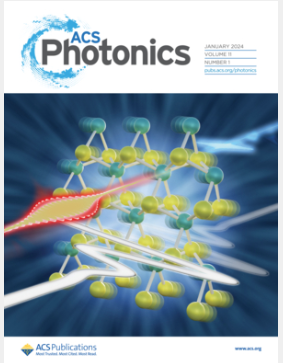Light Emission Enhancement on Nanostructured Surfaces Quantitatively Evaluated by Cathodoluminescence Coincidence Counting
IF 6.5
1区 物理与天体物理
Q1 MATERIALS SCIENCE, MULTIDISCIPLINARY
引用次数: 0
Abstract
Quantification of light emission enhancement from materials by optical resonators is an important fundamental issue. Cathodoluminescence (CL) spectroscopy has the potential to analyze the emission properties of materials with nanometer spatial resolution far beyond the diffraction limit of light. However, due to the lack of excitation wavelength selectivity, it is often challenging for CL to discriminately evaluate multiple emission processes in emitter–resonator systems. Especially in cases where the optical resonators can enhance not only the emission but also the excitation of the emitters, quantification of the light emission enhancement independent of the excitation method becomes more complex. Here, we propose an application of Hanbury Brown–Twiss (HBT) interferometry that is sensitive to the excitation efficiency of CL. We used HBT-CL as well as CL spectroscopy to evaluate the light emission of halide perovskites enhanced by plasmonic resonators and found that the enhancement can be quantified as an increase in coincidence counts. The plasmonic resonator caused almost no change in the second-order autocorrelation function, confirming that the effect of the resonator on electron beam excitation was negligible. Our results suggest that HBT-CL is effective for the quantitative evaluation of light emission enhancement in various emitter–resonator systems.

用阴极发光符合计数定量评价纳米结构表面的光发射增强
利用光学谐振器对材料的光发射增强进行量化是一个重要的基础问题。阴极发光(CL)光谱学具有分析远超光衍射极限的纳米空间分辨率材料发射特性的潜力。然而,由于缺乏激发波长选择性,CL对发射器-谐振器系统中的多个发射过程进行判别评估往往具有挑战性。特别是在光谐振器既能增强发射体的发射,又能增强发射体的激发的情况下,独立于激发方式的光发射增强的量化变得更加复杂。在此,我们提出了一种对CL激发效率敏感的汉伯里布朗-特维斯(HBT)干涉测量技术。我们使用HBT-CL和CL光谱来评估等离子体谐振器增强卤化物钙钛矿的光发射,发现这种增强可以量化为巧合计数的增加。等离子体谐振腔几乎没有引起二阶自相关函数的变化,证实了谐振腔对电子束激发的影响可以忽略不计。我们的研究结果表明,HBT-CL可以有效地定量评价各种发射体-谐振器系统中的光发射增强。
本文章由计算机程序翻译,如有差异,请以英文原文为准。
求助全文
约1分钟内获得全文
求助全文
来源期刊

ACS Photonics
NANOSCIENCE & NANOTECHNOLOGY-MATERIALS SCIENCE, MULTIDISCIPLINARY
CiteScore
11.90
自引率
5.70%
发文量
438
审稿时长
2.3 months
期刊介绍:
Published as soon as accepted and summarized in monthly issues, ACS Photonics will publish Research Articles, Letters, Perspectives, and Reviews, to encompass the full scope of published research in this field.
 求助内容:
求助内容: 应助结果提醒方式:
应助结果提醒方式:


